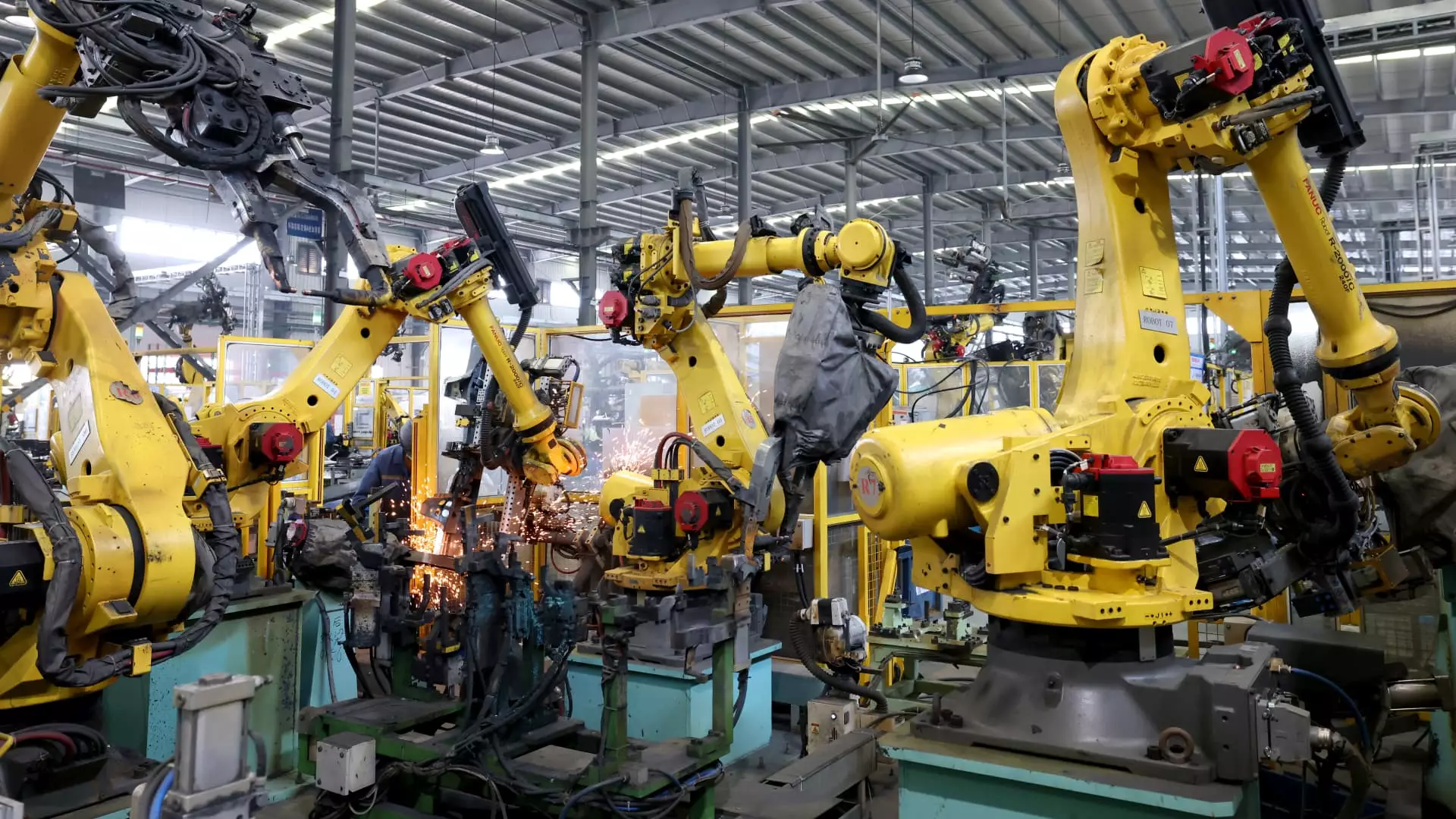China’s economy has shown signs of a potential rebound as reflected in the latest purchasing managers’ index (PMI) data released by the National Bureau of Statistics. For October, the official PMI registered at 50.1, indicating a shift into expansion territory for the first time since April. This increase surpasses analysts’ expectations, which placed the figure at 49.9, and shows modest improvement from September’s figure of 49.8. This latest data not only highlights the resilience of the Chinese economy amidst challenges but also heralds the possibility of stabilization as policymakers begin to roll out wider fiscal measures.
The 50-point benchmark is crucial, as it delineates contraction from expansion in manufacturing activity. A closer inspection of the PMI components reveals a nuanced picture of China’s economic landscape. The production sub-index jumped to 52, illustrating robust growth in activity levels, while new orders maintained a neutral stance at 50. However, some concerning metrics persisted; for instance, raw materials inventory remained stagnant at 48.2 signaling continued contraction, and the employment index, although showing slight improvement, lingered in contraction territory at 48.4. These figures suggest that while there are positive developments in production and new orders, underlying issues related to employment and inventory management persist.
Further analysis is warranted, especially regarding the non-manufacturing sector, where the PMI edged up to 50.2 from September’s 50. This incremental improvement, albeit marginal, points to potential stabilization in services-driven activities that form an integral part of China’s economy. The employment component saw a minor rise to 45.8, underpinning the ongoing struggle in the labor market, even as manufacturing output reportedly improved according to the China Beige Book. This disconnect between manufacturing and labor highlights a critical challenge—recovery in output does not immediately translate to job creation.
Looking Ahead: Policy Directions
The upcoming meeting of China’s parliament standing committee next week is attracting significant attention, as it is anticipated to yield fresh announcements on fiscal stimulus aimed at bolstering economic output. Zhiwei Zhang, Chief Economist at Pinpoint Asset Management, expressed optimism regarding an uptick in economic momentum during the fourth quarter due to potential loosening of fiscal and monetary policies. This perspective reflects a broader hope that government intervention could encourage consumer spending and invigorate the sluggish real estate sector that has been a substantial drag on overall economic improvement.
While the October PMI data provides glimmers of optimism in China’s economic outlook, it is essential to approach these findings with a balanced perspective. Signs of improvement in manufacturing and non-manufacturing sectors should be formally built upon through decisive policy actions. Chinese authorities face the dual task of nurturing growth while addressing deeper systemic issues like consumer demand and employment. As the country enters this critical phase of economic recalibration, the efficacy of upcoming fiscal measures will be paramount in determining if this moment marks a sustainable recovery or a fleeting uptick amidst ongoing challenges.


Leave a Reply